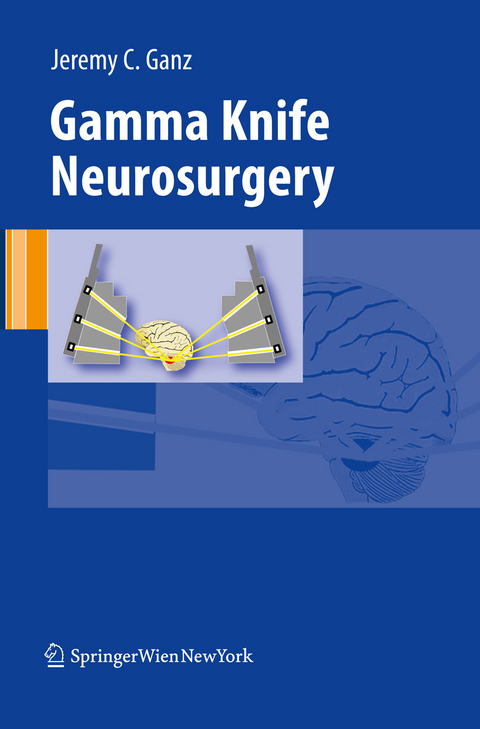
Gamma Knife Neurosurgery
Springer Wien (Verlag)
978-3-7091-1729-3 (ISBN)
Today, over 500,000 patients have been treated world wide in 250 Gamma Knife Centres in 37 countries each one treating between 150 and 700 patients a year.The current book serves as a textbook, training manual and reference book for those involved in Gamma Knife practice covering the theoretical background, the practical aspects of treatment, the social side of the method and necessary information not only for users but for those who refer to the Gamma Knife. It also covers some aspects of the hospital and social administration required for optimal use of the technology, also looking at the effect of the internet on specialist medical practice. It also presents the completely new Gamma Knife (Perfexion), a new technology which extends the range of the Gamma Knife and will be the treatment standard for the future.
Jeremy C. Ganz, born in 1943 in the UK, he is a Cambridge University graduate. He moved to Norway in 1976 and became a staff neurosurgeon in Bergen from 1979. He became director of the world’s 5th Gamma Knife in 1988. From 1993 he taught Gamma Knife radiosurgery to new users in over 75 centres round the world. He built up a Gamma Knife Centre in Cairo between 2001 and 2007 then returning to the Bergen Gamma Knife team.
Section 1.- Background Principles and Technical Development.- 1 - Introduction and the Nature of Radiosurgery.- 2 - Principles of Stereotaxy.- 3 - Ionising Radiation and its Effects on Living Tissue.- 4 - Biological Effects of Ionising Radiation.- 5 - Ionising Radiation and Clinical Practic.- 6 - Gamma Knife Development from 1967 to 2010.- 7. Radiophysics, Radiobiology and the Gamma Knife.- 8 - Preparation for Treatment Planning.- 9 - Dose plan Indices.- Section 2.- The Patient's Experience.- 10 - Gamma Knife surgery and computer networks.- 11 - Aims of Gamma Knife Surgery.- 12 - Principles of Information and Follow Up.- Section 3.- The Gamma Knife and Specific Diseases.- Tumours.- 13 - Vestibular Schwannomas.- 14 - Meningiomas.- 15 - Gamma Knife for Cerebral Metastases.- 16 - Intraparenchymal Intrinsic Brain Tumours.- 17 - Tumours of the Pituitary Region.- 18 - Less Common Skull Base Tumours.-.- Section 3.- The Gamma Knife and Specific Diseases.- Vascular Diseases.- 19 - Gamma Knife for Cerebral Vascular Anomalies.- Section 3.- The Gamma Knife and Specific Diseases.- Functional Indications.- 20 - Trigeminal Neuralgia.- 21 - Diverse Functional Indications.- Section 3.- The Gamma Knife and Specific Diseases.- Less Common Indications.- 22 - Rare tumours and other lesions.- 23 - Orbital Indications.- Section 4.- Conclusions.- 24 - Conclusion and possible Future Trends.- Appendix - Simple Unassisted Frame Application.- Index.
From the reviews:
"This is a didactically well-written book on stereotactic radiosurgery of the brain. ... The book's structure is logical and easy to follow. ... The book is of great interest to neurosurgeons whether beginners or advanced in the field of radiosurgery. ... The book should be part of the library in any radiosurgery center that treats lesions of the CNS and in any department of neurosurgery ... . It should be mandatory reading for young neurosurgeons irrespective of the subspecialty they might choose." (Thomas Mindermann, Acta Neurochirurgica, Vol. 154, 2012)
| Erscheint lt. Verlag | 11.10.2014 |
|---|---|
| Zusatzinfo | XXII, 376 p. |
| Verlagsort | Vienna |
| Sprache | englisch |
| Maße | 155 x 235 mm |
| Gewicht | 611 g |
| Themenwelt | Medizinische Fachgebiete ► Chirurgie ► Neurochirurgie |
| ISBN-10 | 3-7091-1729-1 / 3709117291 |
| ISBN-13 | 978-3-7091-1729-3 / 9783709117293 |
| Zustand | Neuware |
| Informationen gemäß Produktsicherheitsverordnung (GPSR) | |
| Haben Sie eine Frage zum Produkt? |
aus dem Bereich


